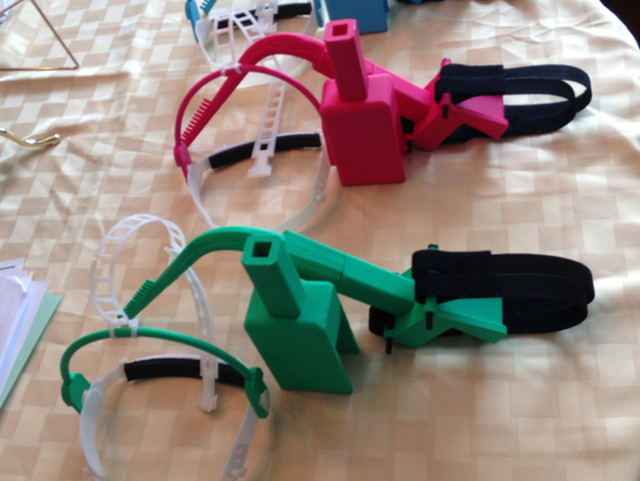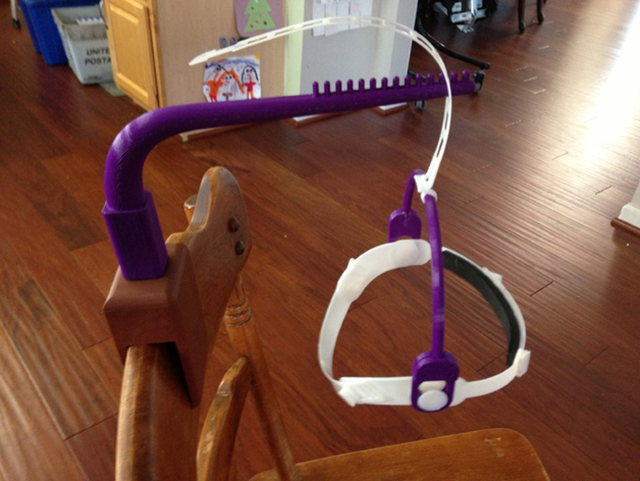In response to the Michigan Tech study that declared the practicality and cost-savings of home 3D printing, a post from The Register counter-declared the crudeness and uselessness of most home 3D-printed objects. But, it doesn’t take long, browsing through Thingiverse, before you realize how wrong The Register could have been. Sure, it may not be a staple in every household, like a sticky note holder, but Thingiverse user wantmys2000’s Head Balancinator is a testament to just how useful, personal and cost-saving home 3D printing already is for some people
The Head Balancinator does exactly what it sounds like it does. Designed for the user’s 20-month-old with hypotonia, this 14-piece build is meant to provide support for her head, while still giving her some freedom of movement. Because the lack of muscle tone resulting from hypotonia makes it difficult for the muscles themselves to fight the weight of gravity, such a device can be attached to a chair and to the head itself to keep the child’s head upright. At the same time, the user’s daughter can still move around, so as to build muscle strength.
Perhaps in part due to the rigidity of printed plastics, braces and prosthetics of all kinds seem to be the most readily printable objects for medical purposes. Printed support systems are lightweight, affordable and easily customized to fit the individual needs of a given patient, whether it be Emma’s exoskeleton or Liam’s artificial hand. And, though such devices surely provide plenty of investment opportunities – as covered in our industry report – I’m happy to see hobbyists taking it upon themselves to develop the devices in their own homes and posting them to Thingiverse. Maybe we’ll even see an entire library of free, printable medical devices to complement the optics library we covered back in May (get on it, people!).





